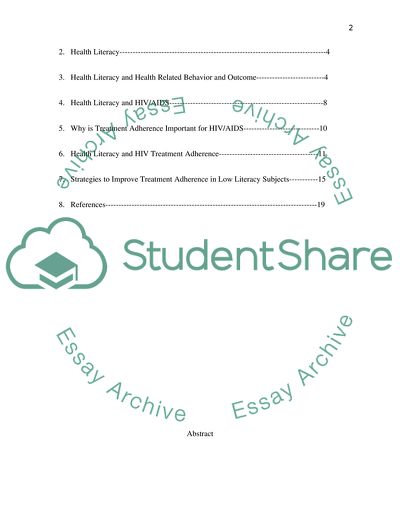Cite this document
(Health Literacy and HIV Treatment Adherence in HIV Patients Literature review - 1, n.d.)
Health Literacy and HIV Treatment Adherence in HIV Patients Literature review - 1. https://studentshare.org/medical-science/1751466-literature-review-of-health-literacy-and-hiv-treatment-adherence
Health Literacy and HIV Treatment Adherence in HIV Patients Literature review - 1. https://studentshare.org/medical-science/1751466-literature-review-of-health-literacy-and-hiv-treatment-adherence
(Health Literacy and HIV Treatment Adherence in HIV Patients Literature Review - 1)
Health Literacy and HIV Treatment Adherence in HIV Patients Literature Review - 1. https://studentshare.org/medical-science/1751466-literature-review-of-health-literacy-and-hiv-treatment-adherence.
Health Literacy and HIV Treatment Adherence in HIV Patients Literature Review - 1. https://studentshare.org/medical-science/1751466-literature-review-of-health-literacy-and-hiv-treatment-adherence.
“Health Literacy and HIV Treatment Adherence in HIV Patients Literature Review - 1”. https://studentshare.org/medical-science/1751466-literature-review-of-health-literacy-and-hiv-treatment-adherence.


